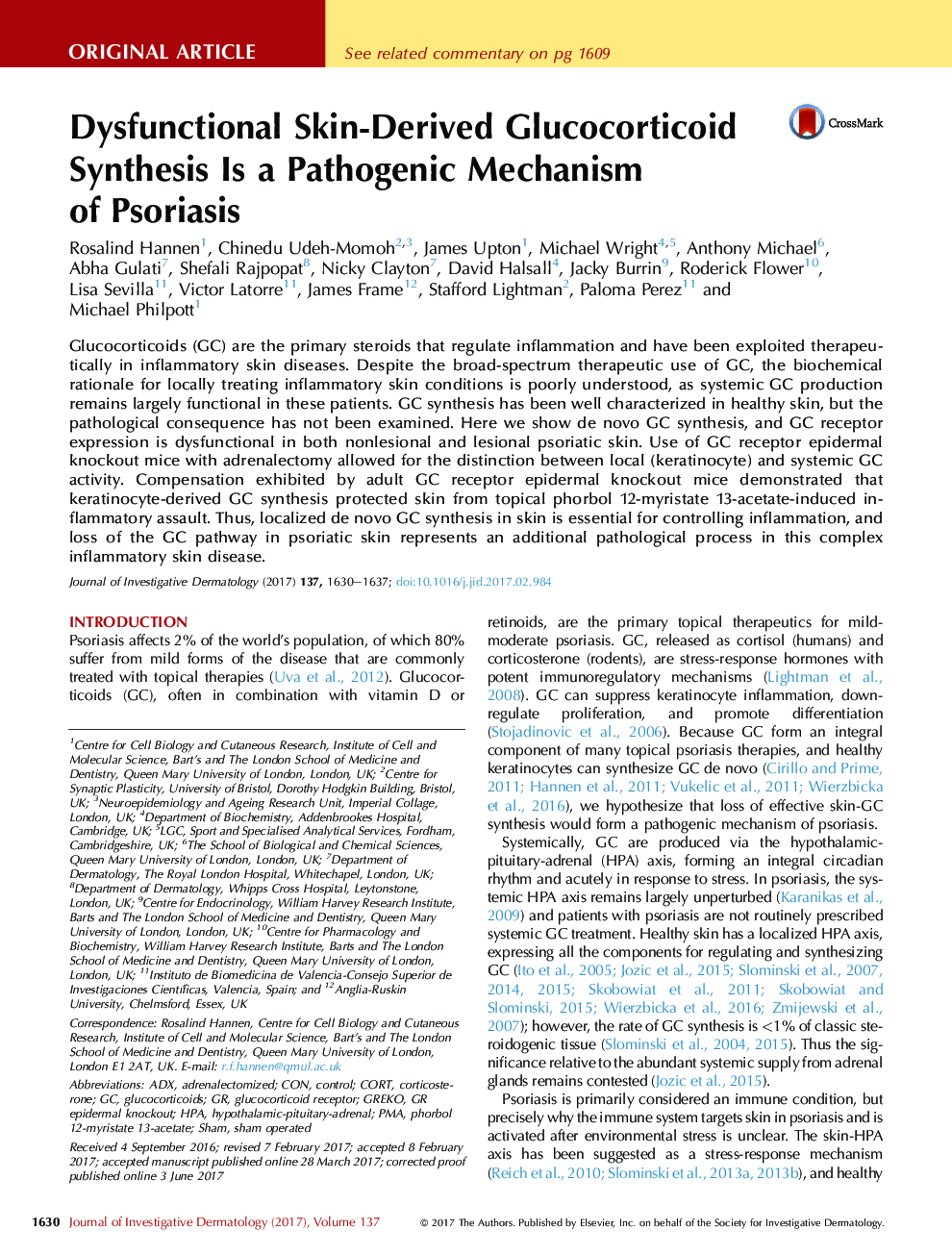| Article ID | Journal | Published Year | Pages | File Type |
|---|---|---|---|---|
| 5649327 | Journal of Investigative Dermatology | 2017 | 8 Pages |
Abstract
Glucocorticoids (GC) are the primary steroids that regulate inflammation and have been exploited therapeutically in inflammatory skin diseases. Despite the broad-spectrum therapeutic use of GC, the biochemical rationale for locally treating inflammatory skin conditions is poorly understood, as systemic GC production remains largely functional in these patients. GC synthesis has been well characterized in healthy skin, but the pathological consequence has not been examined. Here we show de novo GC synthesis, and GC receptor expression is dysfunctional in both nonlesional and lesional psoriatic skin. Use of GC receptor epidermal knockout mice with adrenalectomy allowed for the distinction between local (keratinocyte) and systemic GC activity. Compensation exhibited by adult GC receptor epidermal knockout mice demonstrated that keratinocyte-derived GC synthesis protected skin from topical phorbol 12-myristate 13-acetate-induced inflammatory assault. Thus, localized de novo GC synthesis in skin is essential for controlling inflammation, and loss of the GC pathway in psoriatic skin represents an additional pathological process in this complex inflammatory skin disease.
Keywords
Related Topics
Health Sciences
Medicine and Dentistry
Dermatology
Authors
Rosalind Hannen, Chinedu Udeh-Momoh, James Upton, Michael Wright, Anthony Michael, Abha Gulati, Shefali Rajpopat, Nicky Clayton, David Halsall, Jacky Burrin, Roderick Flower, Lisa Sevilla, Victor Latorre, James Frame, Stafford Lightman, Paloma Perez,
